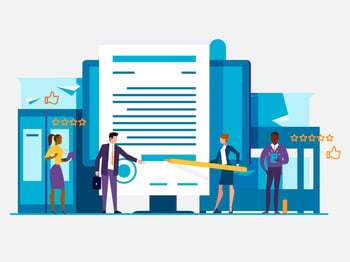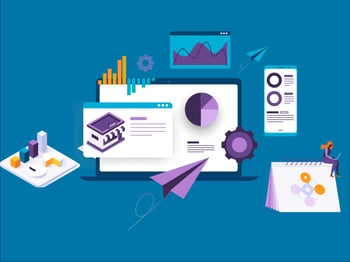A great user experience—one that's intuitive and understandable—results in happy digital banking customers. To deliver this experience, UX testing is a must.
Good design is valuable, feasible, and usable, and Q2's research practices play a big part in shaping highly functional solutions that solve real user problems. In celebration of World Usability Day, we wanted to share some best practices to help your financial institution get the most out of usability testing.
- Test users that are representative of your product's target market. That said, testing any user is far better than testing no users, so don't let the hunt for the perfect user stop you from testing.
- A screener or list of carefully selected questions intended to weed out users that don't match the profile of your target audience, can affordably optimize your recruiting process.
- The number of users you need to recruit for a usability study may be much smaller than you might assume. Often, six to 10 participants participate. Sometimes, five users may be all you need to uncover usability issues.
- Iterative, formative testing allows you to evaluate prototypes while they're in progress, stopping major issues at the design stage before developers build something that isn't usable. There is value in performing formal summative testing with a team of experts. At Q2, our UX team does research with sprint teams on a weekly basis, aiding product development and improving efficiencies. However, if you don't have room in your budget for such services, perform informal in-house testing on a regular basis.
- Involve the project team in usability testing. Doing so will help them feel more invested in fixing usability issues. Watching users struggle through a task in real time has much more of an impact on designers, developers, and product owners than reading (or not reading) a long usability test report.
- Learn to write effective tasks. The clearer and more succinct the tasks, the better for all involved. See this list of tips for writing effective tasks.
- Make testers feel comfortable, assure them that there are no right or wrong answers, allow them to speak without interrupting, and refrain from leading them to solutions.
- Pairing up with another moderator in your sessions will keep you on point and objective, and one of you can ask questions while the other takes notes.
- Consider simple, inexpensive programs to allow you to record a screen capture, audio, and a video of the user for an affordable subscription price. Smashing Magazine provides a robust comparison of affordable user testing tools that is worth checking out.
- Get a handle on accessibility requirements. Make sure you get up to speed on accessibility requirements as they apply to website design. Your customers will be thankful for it, given the possible litigation that can come from not meeting requirements.
With a little bit of practice, anyone with listening skills and an ability to remain impartial can learn to conduct a usability testing session. And while fancy equipment and a perfect recruiting process are nice to have, you can still get meaningful results with these tips.
The case for investing in UX
While you can establish a UX testing program on a shoestring, dedicating budget to usability testing can boost engagement. User advocate Jakob Nielsen has found that spending 10 percent of a project's budget on usability evaluation can more than double a website's desired quality metrics. Besides less annoyed customers, this can translate into increased revenue opportunities, less development rework, fewer support calls, and a greater overall level of user trust in your brand.
Q2's investment in UX is paying off
Q2 believes that world-class UX design requires dedicated funding. In 2016, we opened an in-house usability testing facility called the Experience Research Center (XRC) that is unique in the digital banking space. The XRC is a place to do product research in a controlled environment and allows Q2 to regularly research UI designs, product plans, early-stage concepts, and existing software so we can help make them better. The Product Research Team has already driven over 200 product improvements, and led us to add more than 40 feature and product ideas to the Q2 Product Roadmap.
If you want to learn more about how Q2 can help your financial institution reap the benefits of UX testing, contact us today at research@q2ebanking.com.



